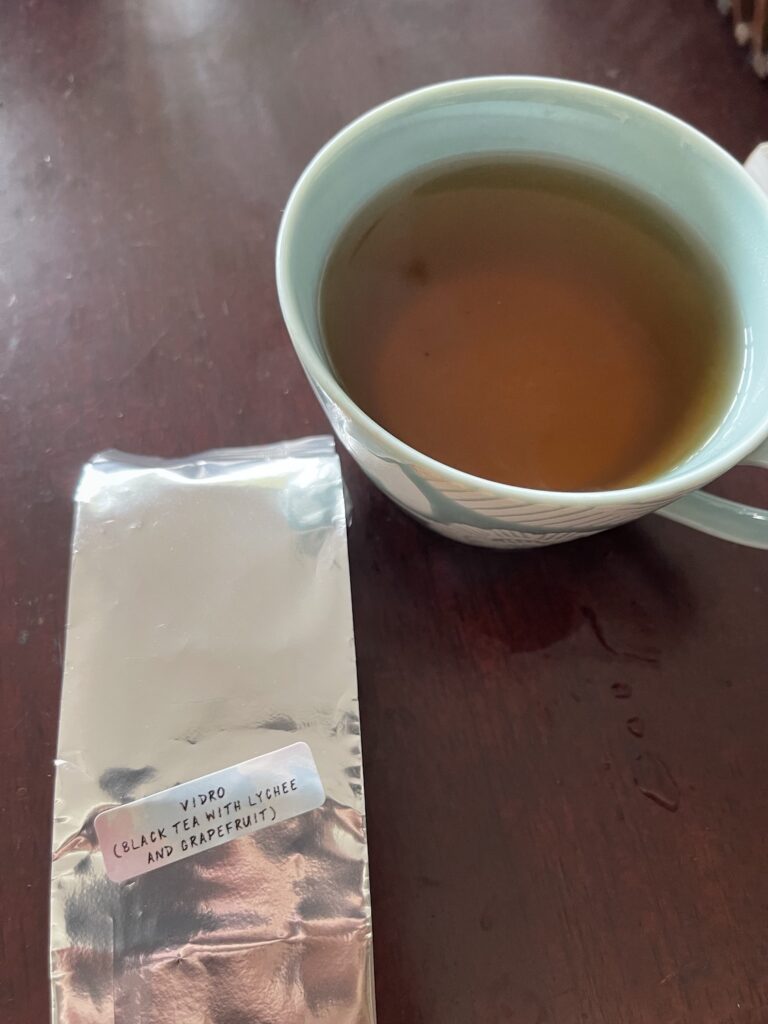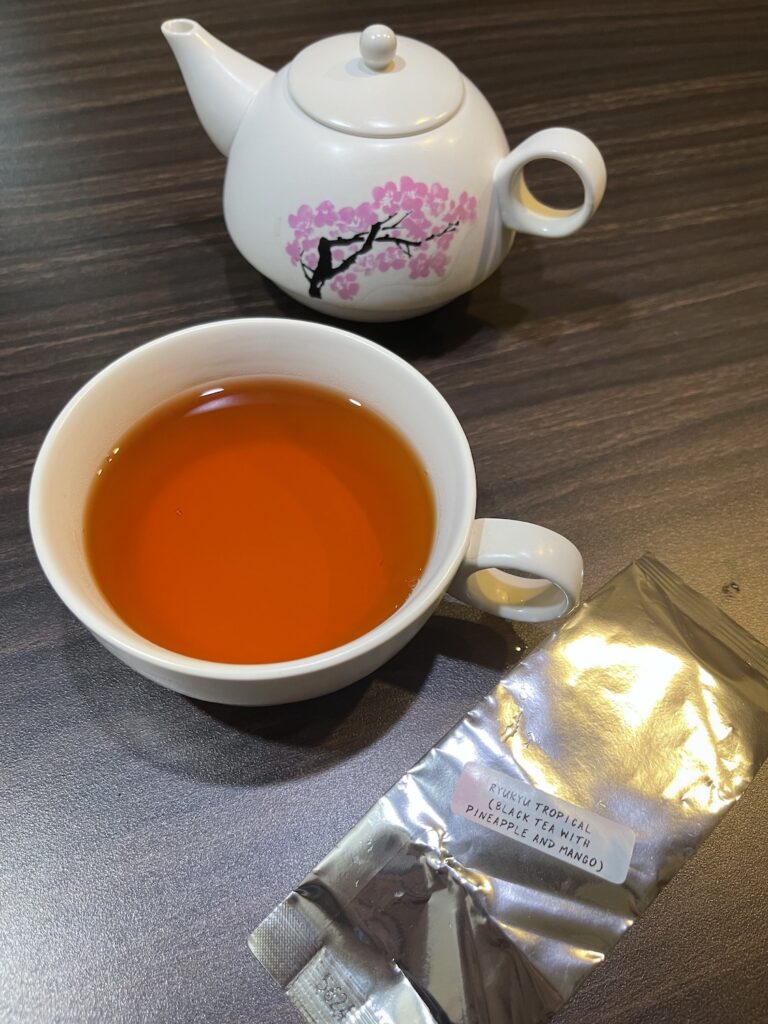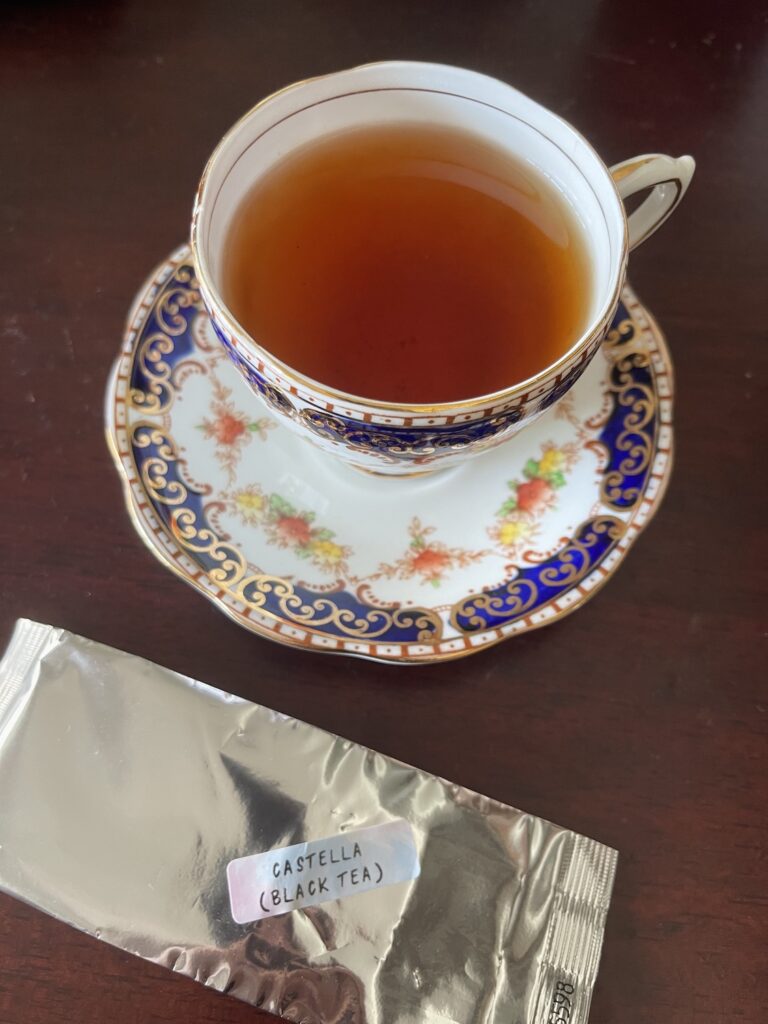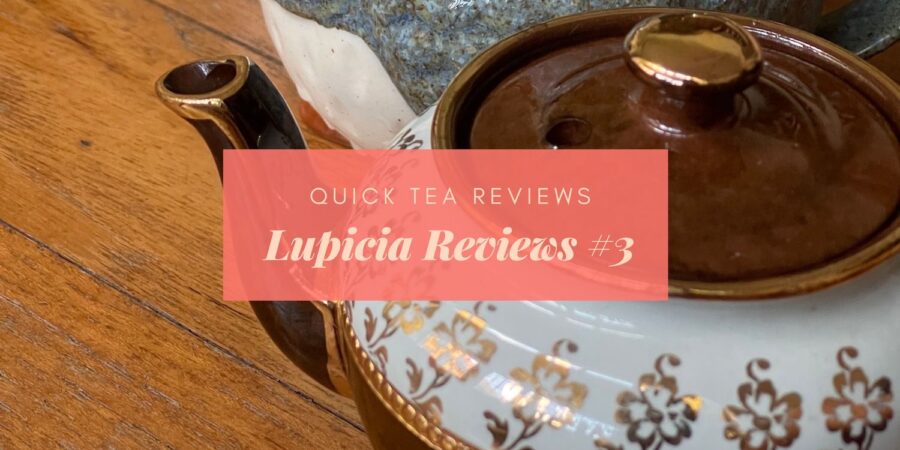It has taken about a month, but we are at the third installment of the Lupicia Quick Tea Reviews series and I’ll be finishing up the teas from December in this post. This means I only have the January teas left to drink (until Ethel passes me more).

Today’s teas are pretty fruity – the first tea I want to talk about is Vidro, which is a black tea with lychee and grapefruit. Vidro actually brews really quickly, and I couldn’t help but think that this would be a great tea for cold-brewing. The tea is pretty sweet and very fruity – sometimes I could tell the fruitiness was from the lychee note, other times the fruits just blended to gether (kind of like when you eat generic fruit candy). I only managed to “catch” the grapefruit note when the tea was overbrewed, but that also came with a weird note that I can only call “musty”. I found this to be a pretty tricky tea to make hot.

The second tea is another fruity one called Ryukyu Tropical. It smells like pineapple and it tastes very sweet, as though I was eating canned fruit with syrup. I found this to be similar to Vidro, except Ryukyu Tropical was a bit smoother (no musty note, basically). Out of curiosity, I added a splash of milk to one of my cups of tea and found that it was a mistake – the fruity notes took on a sour tinge.

The third tea that I had was called Castella, after a popular cake in Nagasaki. The tea leaves are, to be blunt, closer to tea dust than leaves. There are what look like large sugar crystals mixed in with the tea leaves and they instantly made me think of the zarame sugar at the bottom of many castella cakes. In terms of taste, the tea has a strong caramel note. Unlike the Ryukyu Tropical, the Castella lends itself to a milk tea format, and I found the milk really complemented the caramel notes in this tea.

The final tea was a bit of a puzzle. It’s called Sanpincha (a very popular Okinawan tea) but unlike the original, is flavoured with lychee. Apparently, this is Lupicia’s take on Sanpincha and as something who was a fan of the original, I’m not convinced that it needed lychee. While I managed to get a hint of the original jasmine while drinking the tea, I found the tea tasted mainly like lychee, which made it feel unlike a sanpincha.
Overall, these were four interesting and pretty tropical teas. It made me wish I could go back to Okinawa for another visit – I’ve only been there once and I feel like I have so much left to discover!
